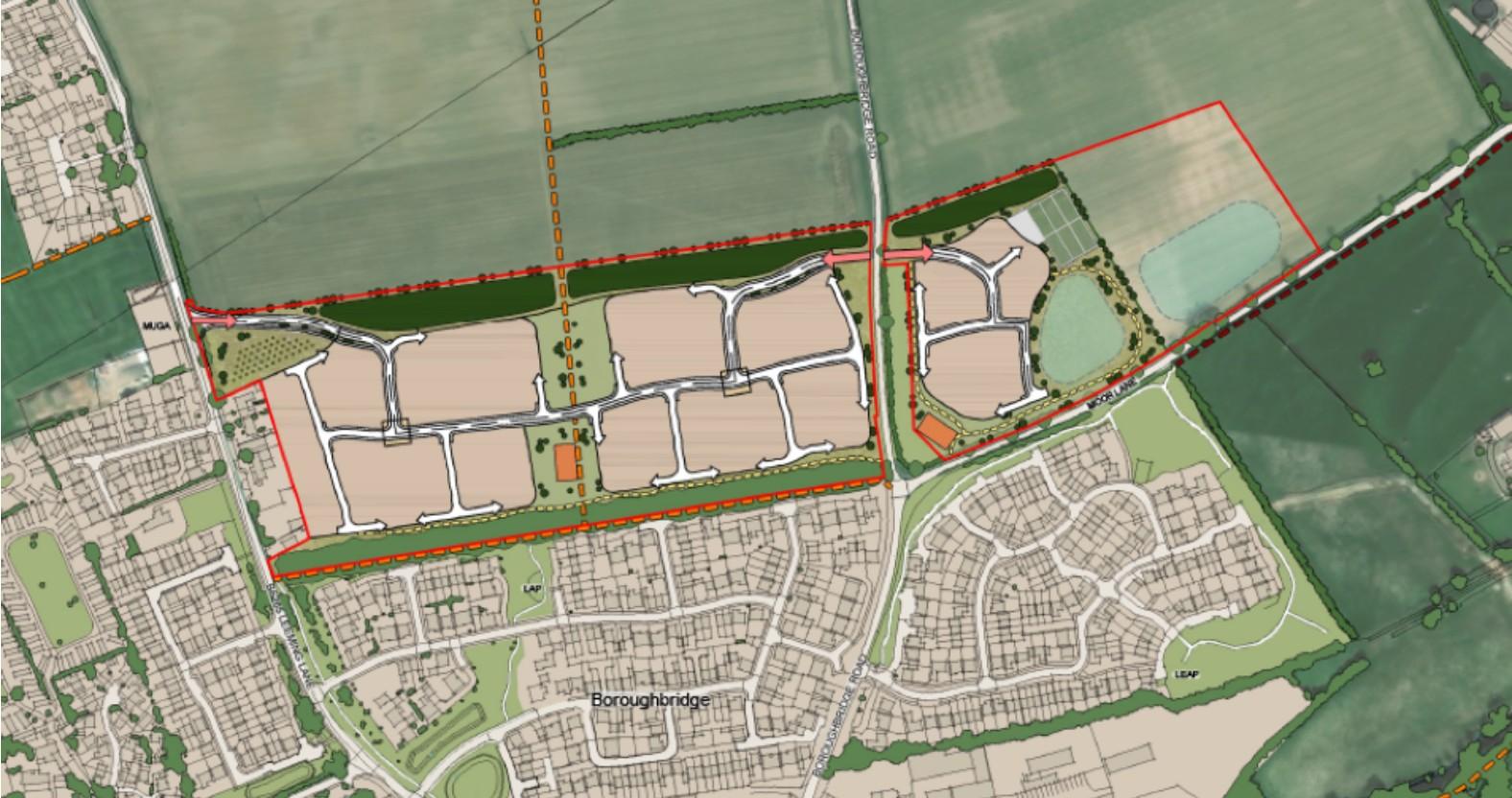Subscribe to trusted local news
In a time of both misinformation and too much information, quality journalism is more crucial than ever. By subscribing, you can help us get the story right.
- Subscription costs less than £1 a week with an annual plan.
Already a subscriber? Log in here.
30
Aug
Ancient settlement discovered on proposed housing site in Boroughbridge

Archaeologists have discovered the remains of a Romano-British settlement on a site in Boroughbridge where a developer wants to build 250 new homes.
The finds include unusually “high concentrations” of circular enclosures, field systems and connecting trackways.
According to Peter Rowe, principal archaeologist for North Yorkshire Council, the remains have "the potential to be of national significance and of equivalent value to a Scheduled Monument".
Responding to the planning application to build the homes, he writes that remains "are particularly concentrated in the eastern part of the proposal where the anomalies are complex" and have "a very urban appearance with dense concentrations of features lined along a main street".
Romano-British is the term used to describe the culture that developed in Britain – which was then a collection of Celtic kingdoms – during its 367-year occupation by the Roman Empire.
The discovery of the remains is outlined in a 62-page heritage statement compiled by national development consultancy Pegasus Group on behalf of Gladman Developments Ltd, which has applied for planning permission to build the homes.
The report states that geophysical surveys in 2019 and 2025 identified “probable late Iron Age/Romano-British archaeological remains pertaining to agricultural and settlement activity" right across the site.
It says:
These results have the potential to provide an illustration of the wider archaeological prehistoric/Romano-British context around Boroughbridge.
It adds that the settlement may be connected with the Romano-British town of Aldborough, which lies a mile to the south-east.
Aldborough, which is now a quiet village, is believed to have been the civic capital of the powerful Brigantes people. The Brigantes were the largest tribe in Roman-occupied Britain and controlled much of the North from a power base in Yorkshire. After initial resistance they started to support the Romans under their queen, but later rebelled, were defeated, and came under direct Roman rule.

The Roman site at Aldborough, near Boroughbridge.
In its heritage statement, Pegasus Group recognises that further archaeological assessment is necessary in the form of trial trenching, and North Yorkshire Council archaeologist Peter Rowe has discussed a trenching strategy with the firm.
Gareth Owens, who runs the Kirby Hill village website, said of the discovery:
It’s very exciting – it's got a lot of potential. Roman Aldborough has been known about for many years, but there’s never been much exploration north of the river.
This place has been on a strategic route for millennia, and the Roman road from Aldborough to Catterick runs through Kirby Hill.
One of the cornerstones of All Saints' Church in Kirby Hill, which was built in 986, is an inscribed Roman stone. People have always thought it came from Aldborough, but now it appears it may have come from somewhere much closer.
The discovery has been welcomed by many local residents, and not just for heritage reasons. The development applied for by Gladman would further close the greenbelt gap between Langthorpe, which lies on the north bank of the River Ure opposite Boroughbridge, and the village of Kirby Hill, to the north. A previous application to build there was refused in 2019.

The Gladman Developments site in Boroughbridge.
In 2018-19, Harron Homes narrowed the gap when it built the 176-home Hockley Croft development on land it bought from Gladman Developments. The current site, which covers 15 hectares (37 acres) of land off Leeming Lane, lies just north of Hockley Croft, and would effectively bring Langthorpe and Kirby Hill even closer together.
Miller Homes is also consulting on building a further 250 homes on a separate site just south of Kirby Hill.

The planned housing site in Kirby Hill.
If both the the Gladman development and the Miller Homes developments were to go ahead, they would close the distance between Langthorpe and Kirby Hill to little more than a field’s width: just 280 metres (980 feet).
As a result, some hope the latest archaeological finds might slow down or even halt the Gladman development. The application has already attracted 49 objections.
One resident posting on the Kirby Hill Facebook page wrote:
O yes!! Stop the bloody building – Boroughbridge is big enough!
Elsewhere in the area, Welcome Break has submitted a highly controversial application to build a motorway service station next to Kirby Hill, and just this week, councillors approved plans for 195 homes on the southern edge of Boroughbridge.
Mr Owens said:
This site has been refused for housing once before, and it may well be again. But archaeology alone doesn’t typically stop developments, and if it does go ahead, then we have a duty to ensure that the area’s archaeology is thoroughly researched and documented before building starts.
1